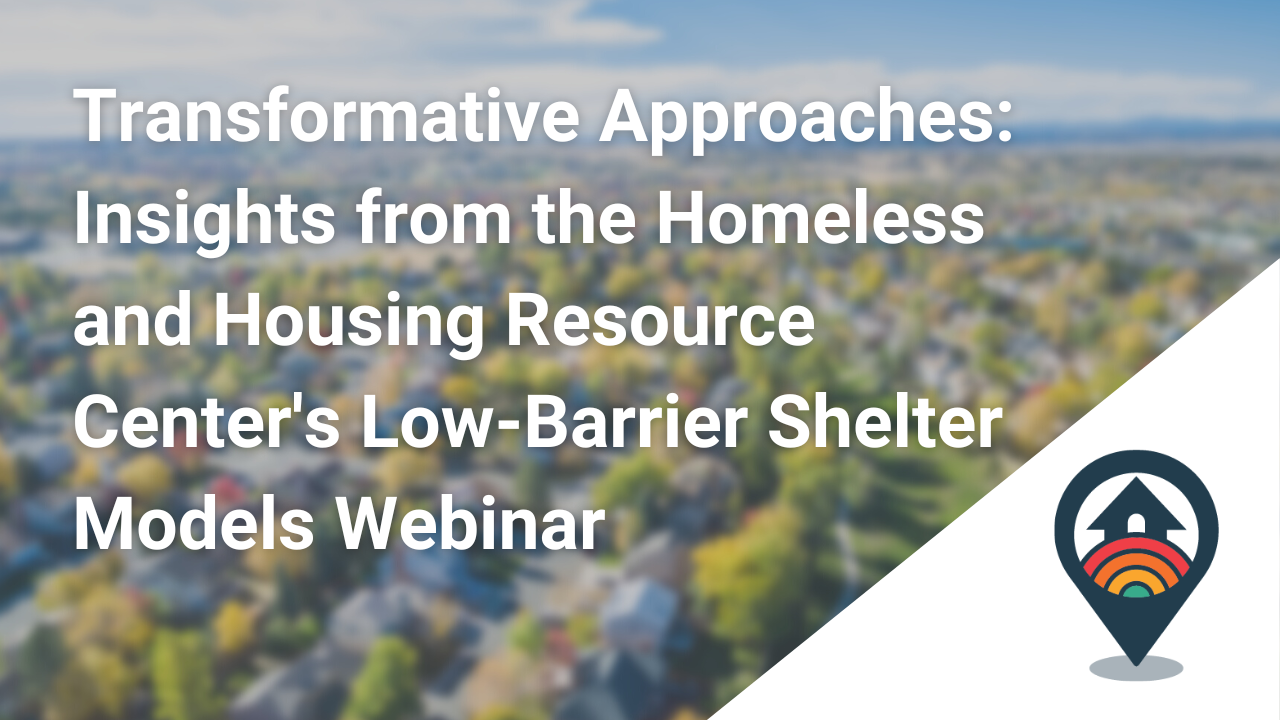As we strive to address the unique needs of individuals experiencing homelessness, the recent webinar “Low-Barrier Shelter Models for People Who Use Drugs” brought invaluable insights from Camillus House in Miami, Florida, and Beacon House, a project through Prevention Point in Philadelphia, Pennsylvania. Hosted by SAMHSA’s Homeless and Housing Resource Center (HHRC), the webinar offered an illuminating discussion on innovative shelter models that prioritize inclusivity and dignity for those with substance use disorders. Here are the top 10 takeaways that service providers should consider:
Humanize Guests and their Experiences
Camillus House and Beacon House emphasized the importance of viewing homelessness through a compassionate lens. Low-barrier shelters prioritize humanity above all, providing a safe space where individuals are respected and valued.
Provide Person-Centered Care
The shelter models showcased in the webinar prioritize person-centered care, acknowledging that everyone’s journey towards stability and recovery is unique. By tailoring services to individual needs, providers can better support those experiencing homelessness.
Develop an Inclusive Admission Processes
Both programs use a coordinated entry system to prioritize admissions based on need. By considering factors like chronic homelessness and other vulnerabilities, the shelters ensure those most in need receive timely assistance.
Integrate Community and Peer Support
Building a sense of community is crucial. Both programs leverage peers who have experienced homelessness to create a supportive environment. Peers play a vital role in outreach, engagement, and fostering connections among residents.
Establish Paraphernalia and Use Policies
The shelters have carefully designed policies around paraphernalia and substance use within the premises. The approach is non-punitive, aiming for open conversations and intervention before resorting to discharge.
Incorporate Overdose Prevention and Response Strategies
Both programs are committed to overdose prevention and response. Staff members are trained in administering naloxone, ensuring that immediate assistance is available when needed. This commitment reflects a genuine concern for the well-being of people.
Provide On-the-Job Training and Shadowing Opportunities
An emphasis on on-the-job training and shadowing allows staff to understand the unique challenges faced by individuals with substance use disorders. This approach fosters a supportive environment where staff can provide the most effective care.
Offer Flexible Training Plans
The featured programs implement flexible training plans for staff, recognizing that one size does not fit all. Tailoring training to specific roles and responsibilities ensures that staff are equipped with the knowledge and skills they need to succeed.
Investment in Staff Well-Being
Both organizations prioritize staff well-being by offering generous paid time off packages. Acknowledging the emotional toll of working in a challenging environment, the shelters empower staff to take the time they need for self-care.
Support Leadership Development
The introduction of organization-wide Leadership Academies underscores the commitment to staff development. Providing training and resources for leads, supervisors, and those interested in leadership roles ensures a well-prepared and empowered team.
Conclusion
“Low-Barrier Shelter Models for People Who Use Drugs” showcased how low-barrier shelter models can be transformative in addressing the complex needs of individuals with substance use disorders who are experiencing homelessness. These takeaways only scratch the surface of the wealth of information shared during the session. For a comprehensive understanding of the featured models and their impact, we encourage you to watch the full webinar. By embracing innovative and compassionate approaches, we can collectively contribute to creating a more inclusive and supportive shelter environments.
Learn More about HHRC’s free online training courses for housing and health professionals: https://hhrctraining.org/training-courses
This blog post was developed with the assistance of generative artificial intelligence.


